Koderma, Giridih (Jharkhand): Earlier this month, when the National Commission For Protection of Child Rights (NCPCR) began probing a complaint against cosmetics brand ‘Fenty Beauty’, owned by pop star Rihanna, for allegedly using mica from mines in Jharkhand that use child labour, it shone the spotlight on a dark, illegal but thriving business in two remote districts of eastern India.
Mica, the shimmery, translucent mineral, is used in cosmetics and automobile paint among other sectors.
The illegal trade of scrap mica has been an open secret in Jharkhand since 1980, when mica mining was banned by environmental laws. A global appetite for the mineral and its abundance in mica-rich districts, however, has kept the practice going unregulated.
Mica mining first rose to global notoriety around 2014, when the illegal mining in Jharkhand involving child labour was reported by the western media.
The problem of child labour still persists, as the alleged crime involving Fenty Beauty shows.
A 2018 NCPCR report pegged the number of children from Koderma and Giridih — the two mica-rich districts of Jharkhand — dropping out of school to mine for mica at 4,545. A report before that, by NGO Terre des Hommes, estimated 22,000 children were involved in scavenging for mica in Jharkhand and the neighbouring state of Bihar.
A 2018 report by the NGO Children in Need Institute (CINI) also found that 45 children had died in the mica mines between 2013 and 2018.
The Jharkhand government has worked to mitigate the problem but district officials are worried that the pandemic-induced lockdown has upended all the progress that has been made.
“We have made sure every child is enrolled in school, as a step to correct the problem. Of course, we cannot force them to go to school, but we had seen an improvement in attendance,” Koderma District Magistrate Ramesh Gholap told ThePrint. “The lockdown may have led to some of these children going back to the mines,” he said.
“It’s not unlikely that the number of children working with their parents in mica mines has increased in Jharkhand,” Aspirational District Fellow of Giridih, Satyaki Ganguly, told ThePrint.
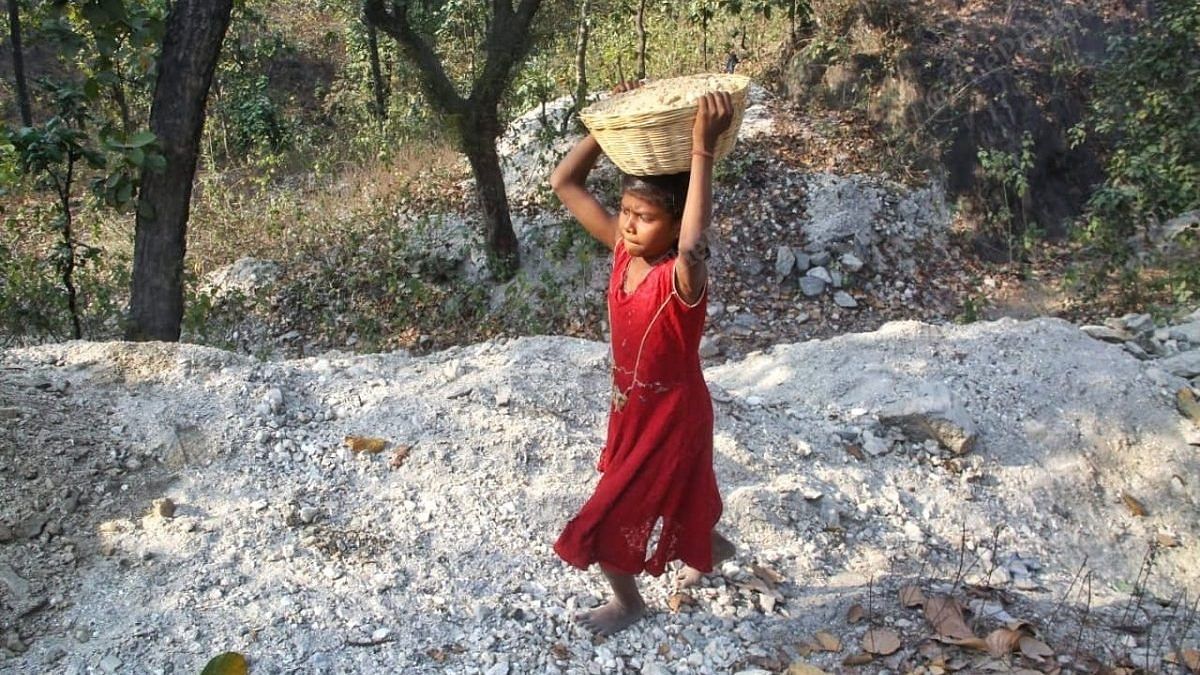
Paying a heavy price
On 21 January, Badal Kumar, 16, and his younger brother Rohit, 12, were playing outside their home when their uncle came bearing the terrible news: their mother, Kaushaliya Das, had died in a mining accident.
Das had been scavenging for scraps of mica when a 40-foot-deep cave collapsed onto her and five others.
The boys, who had accompanied their mother to the mines just a few days prior to her death, were in shock. The mines had claimed their mother two, over a decade after their father died in a similar accident.
“Our father died in a mine soon after Rohit was born. Of course my mother was afraid of getting into an accident, but she had to do something to keep food on the table,” Badal told ThePrint, his eyes fixed firmly to the ground. “I used to help my mother from time to time. She wouldn’t let me climb down the holes, and I would stay on the outside. But I’ll never do this work again.”
For weeks, the Phulwariya mines in Koderma district, where the accident occurred, lay abandoned for fear that “the dead were haunting” them. But not for long.
“People have gone back to the mines to work. They have to earn. They have to eat,” said Sanjay Singh, one of two who survived the accident and swore off mica mining.
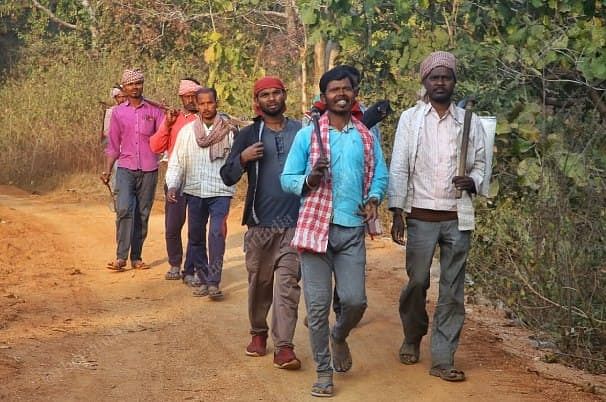
An old industry hit by environmental norms
For generations, families living in Koderma and Giridih have taken to mining the mineral, a practice first established by the British before India gained Independence.
This spurred a thriving industry, which saw small-scale mining companies operating on government-approved leases. At the industry’s peak in the 1970s, Koderma and Giridih housed over 500 mines, producing over 17,000 tonnes of mica.
When industries were involved, mica mines ran over 70 feet deep, sometimes cutting into the hilly terrain, to extract sheets and blocks of the mineral wedged between rocks. India was among the biggest exporters of mica, which, being a natural insulator, was used extensively in the production of artillery and electronic devices and appliances.
Its sheen has, in more recent times, also made it popular for use in cosmetic products and automobile paint.
A slew of laws, rules, and notifications — chief among them the Forest Conservation Act of 1980, which bars non-forest activities in designated forest areas without permission from the Union environment ministry — led the companies to withdraw from the industry.
It also meant that Jharkhand, once known as the mica belt of India, lost its tag as the largest mica producer in the country to Andhra Pradesh.
“There was no longer an incentive for companies to stay, so the industry, which was earning a lot from exports, came to a halt,” said a former mine and mica factory owner. “These two districts haven’t fully recovered since then.”
Though rich in minerals, Koderma and Giridih, which border each other, have performed poorly on various human development indices over the years.
Giridih is among the 100 most backward districts in the country when it comes to education, skill development, agriculture and basic infrastructure, securing a ranking of 62 in the Niti Aayog’s Aspirational Districts baseline ranking. It was also among the districts that showed the least improvement across these indices in 2018.
The shape that mica mining has taken in the districts hasn’t helped. According to those in the know of the business, in the absence of mining companies, middle men source mica from labourers, who scavenge for mica scraps in the innards of forests, digging into the earth with hammers and nails concealed by the green cover, or by re-entering abandoned mines and mica dumpsites.
Accidents can occur when the caves dug by labourers, in search of mica, collapse on them. Workers go in with only a turban for head protection.
“This is the main livelihood of people. Those who are mining today have been doing it for generations, so there is also a reluctance among people to shift away from what they are familiar with,” said Gholap, the Koderma DM. “Most people in this district are involved in mining and crushing activities in some way or the other.”
Those who enter the mines here, said local traders, cannot carry out industrial-level mining, and have to make do with just picking mica scraps — small shards of the mineral left behind after the industries withdrew.
Locally called dhibra, mica scraps are freely available in the mud around mining sites. A kilo of mica scraps can sell for anything from Rs 3 to Rs 15, depending on the quality. A full day’s work will earn the labourers between Rs 150 and Rs 250.
“How much we make depends on how much we pick. We keep our girl at home but our sons help us with the work. If we don’t do this work, what will we do? We cannot farm because we do not have land. There is no other work for us to do,” Saraswati Devi, who lost her husband Mahender Das in the mining accident last month, told ThePrint.
Poverty marks the lives of those who enter the mines. Badal and Rohit, orphaned after their mother’s death, were given Rs 20,000 and 50 kg of rice by the district administration. They allege that the same uncle who bore the news of their mother’s death stole the rice and tried to take the money from them before other family members intervened.
“They were beating these children up because they wanted the rice and money,” said the boys’ maternal aunt, Geeta Devi. “We took them into our home when we heard about this. This is the state of those who do this work.”
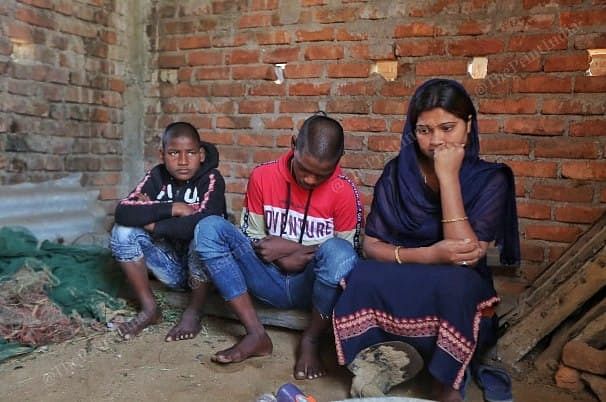
An extra pair of hands
For families that mine together, more hands means more money. Children accompany their parents to the mines both because they cannot be left at home alone, and because they can help collect more mica scraps in the dumpsites.
Since the lockdown started, Neha Kumari, 16, and her brother Mahavir, 13, have accompanied their mother Fema Devi to the mines every day. Neha wakes up at 6 am to first help with household chores, while Mahavir is allowed to play, before all three head to the Nauma mines in Koderma.
“Before the lockdown, I was staying at a hostel and attending school. I’m at home now, and not doing anything, so I’m here to help my parents,” she told ThePrint, while sifting through the mud to scavenge for mica.
Both Neha and Mahavir are behind on their education — Neha, who should be in Class 11, is still in Class 9, while Mahavir, though 13, is still in Class 3. They had not been able to go to school for years because there was no means for them to travel.
“I wasn’t able to send them to school because there was no bus that would come to our house,” Fema Devi told ThePrint. “Both are now enrolled in residential schools, which the district administration helped with. But school is closed now, so they are here with me.”
Neha’s two older sisters were married by the time they were her age because they weren’t educated and the family couldn’t continue paying for all four children. Neha hopes for a different life, as does her mother.
“She wants to study, and we will not get her married any time soon. I married off my other daughters when they were young because what else could I have done? We hardly earn anything. There wasn’t enough money.”
Approximately 100 km away in Giridih’s Devanjot village, 12-year-old Dhanashree squats with a group of young girls and women — all between ages 12 and 21 — to collect dhibra.
“I would go to school but the teacher hasn’t come in months. I don’t know where this mica goes, but I’ve learnt how to collect it,” she says.
Dhanashree’s neighbour, 21-year-old Vasanti, told ThePrint: “We know that this work isn’t allowed and that we could be punished if caught. But it isn’t fair to snatch food from a poor person’s stomach, is it?”
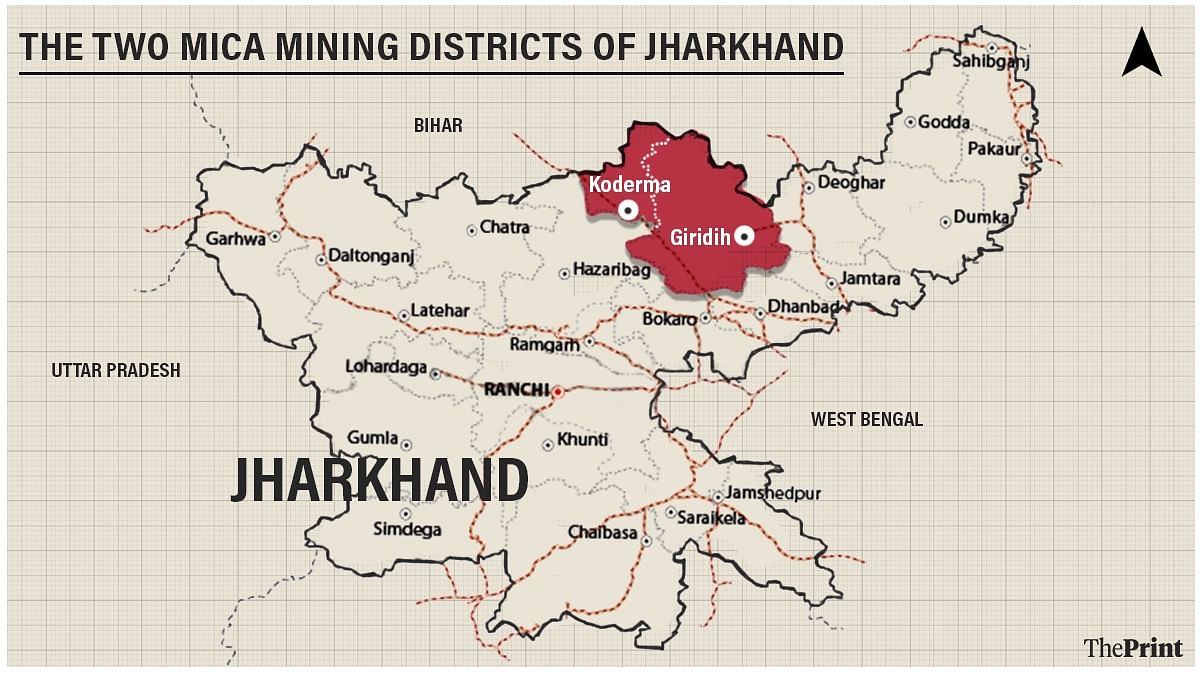
Down the supply chain and out of the country
From labourers who toil in the mines, mica transfers hands several times before it is sold out of the country.
Mica’s place in Jharkhand’s mining laws is complicated. Though the mining of mica is banned, its status is altered once it is manufactured.
“There are three issues; illegal trade, invisible players and opaque market,” said Sanjoy Patnaik, a researcher who has authored a report on mica mining in Jharkhand. “Since mica trade is illegal, it doesn’t create a regular and systemic market with an effective regulatory mechanism. Instead, it creates invisible market players who control and conceal the price and volume of trade.”
A local trader who sells mica scraps to manufacturers declined to tell ThePrint the price at which the mica is sold, but said it is done “in tonnes, and not in kilos”.
“Transportation for us is very risky. We have to hide the mica, and we often drive at night. If we get caught, we pay bribes so we aren’t stopped,” the trader added.
Once the mica reaches a manufacturer, however, it is no longer strictly illegal to trade in it. A provision in the Bihar Mica Act of 1957 allows for the legal trade of manufactured mica, which is why the export of the mineral has survived in the state.
“Exports have fallen because our factories are always sealed. The district administration seals our factories under the The Jharkhand Minerals (Prevention of Illegal Mining, Transportation and Storage) Rules, which prohibits the manufacturing of mica, but it’s a constant tussle because Rules cannot surpass Acts. If this [Bihar Mica Act] is repealed, it will kill the entire industry,” the former mine and factory owner quoted above told ThePrint.
All the regulation has meant that India, which was once among the top exporters of mica, is now at eighth place, according to the report authored by Patnaik.
In 2016, the latest data available with the Indian Minerals Yearbook, India exported 1,35,805 tonnes of mica worth nearly Rs 4 billion. China is India’s biggest importer of India’s mica, buying about 60 per cent.
“The situation is bad for labourers, but if this industry is taken away altogether, it’ll be worse for them. One solution is to provide leases for mining again,” the factory owner added.
A regulation mess
Improving the livelihoods of mica miners has proven to be difficult because of the activity’s confused legal status.
“When accidents and deaths occur, people often hide it from us fearing punishment,” said Gholap, the Koderma DM. “When it comes to our notice, we do everything we can to provide help — ration, registration of golden cards under Ayushman Bharat, for example. But beyond that, even our hands are tied.”
Satyaki Ganguly, the Aspirational District Fellow of Giridih, said the administration had provided mining communities with double ration packs during the lockdown, and was in the process of mapping those involved in the practice to connect them with government resources, such as model anganwadis, self-help groups, and enrolling students in residential schools.
The workers have also looked to better their working conditions. In an attempt to organise, mica scrap workers in Giridih have formed the Dhibra Mica Scrap Shramik Swablambi Co-operative — a body that proposes to buy mica off labourers at a fair price and sell it to manufacturers. Since it was first formed in March 2020, right before the lockdown hit, 120 labourers have joined the initiative.
“This is the first time dhibra workers are organising. We have written to the secretary of the mines department as well as the CM, asking them to recognise our proposal,” said Kanshiwar Bharti, a mica scrap worker and president of the cooperative. “We’re prepared to pay taxes or any cess if necessary. We just want a seat at the table, so we can retain some control over the work that affects our livelihoods.”
There have been murmurs that the Jharkhand government is looking to regulate mica mining but so far nothing concrete has emerged. In an attempt to issue fresh leases, the Jharkhand State Mineral Development Corporation had put up 17 mica dump sites on auction in 2017 — as is the norm for leasing minerals for mining — but it was met with a tepid response and no leases were awarded.
Bidders had raised questions about the quantity of mica available in these dumps as well as the environmental clearances required to be awarded the tender, and it is unclear whether the tender was renewed after it expired in 2020.
“The auction process needs to happen online, which can be an access problem for many small scale operators,” Srestha Banerjee, an environment and public policy expert, said.
“Since an auction is a forward bidding process, the highest bidder wins. If the starting bid is too high, small scale miners, who are often involved in minor minerals, will be deterred.”
A member of the Mica Exports Association, who did not wish to be named, said, “The government has been working a lot to come up with a policy but they had also increased the bid by a large amount, so it became unattractive for industry players.”
Attempts have also been made to cut down on the child labour problem. The Responsible Mica Initiative (RMI) was set up in 2017 to push global brands sourcing their mica from India to ensure no child labour is involved in the process.
For large corporations using mica in their products, RMI has become a marker for how ethically sourced the products are.
“We first collectively with members (including processors) and different stakeholders developed responsible workplace standards, and we are now providing handholding support to these actors, to help them in implementing responsible workplace practices, like self-assessments, dedicated corrective action plans, in-person training sessions,” Fanny Fremont, Executive Director of RMI, told ThePrint through email.
A 2020 report by NGO Terre des Hommes, which was researched by Patnaik, says a key to the puzzle may lie in differentiating mica mining — which would require industrial level drilling and environmental clearances — from dhibra collection, which is far less invasive.
“What continues as an area of concern is the confused legal status of dhibra that makes the state government ignore the existence of dhibra trade operations,” the report reads. “As a result, neither the state government nor the local panchayats seem to be having any legal authority to regulate dhibra sale price.”
It goes on to advise several policy interventions: formalising the trade of dhibra so that its price is monitored, introducing additional livelihood programmes, allowing the collection of dhibra inside forests as “a conservation strategy with the condition that such operations must not damage tree crops”, as well as leveraging schemes like NREGA to ensure “dhibra collection ceases to become a distress livelihoods option”.
For labourers like Tulsi Rai who have worked in the mines for years, talk of regulation, alternative sources of income, and safety still seem far fetched.
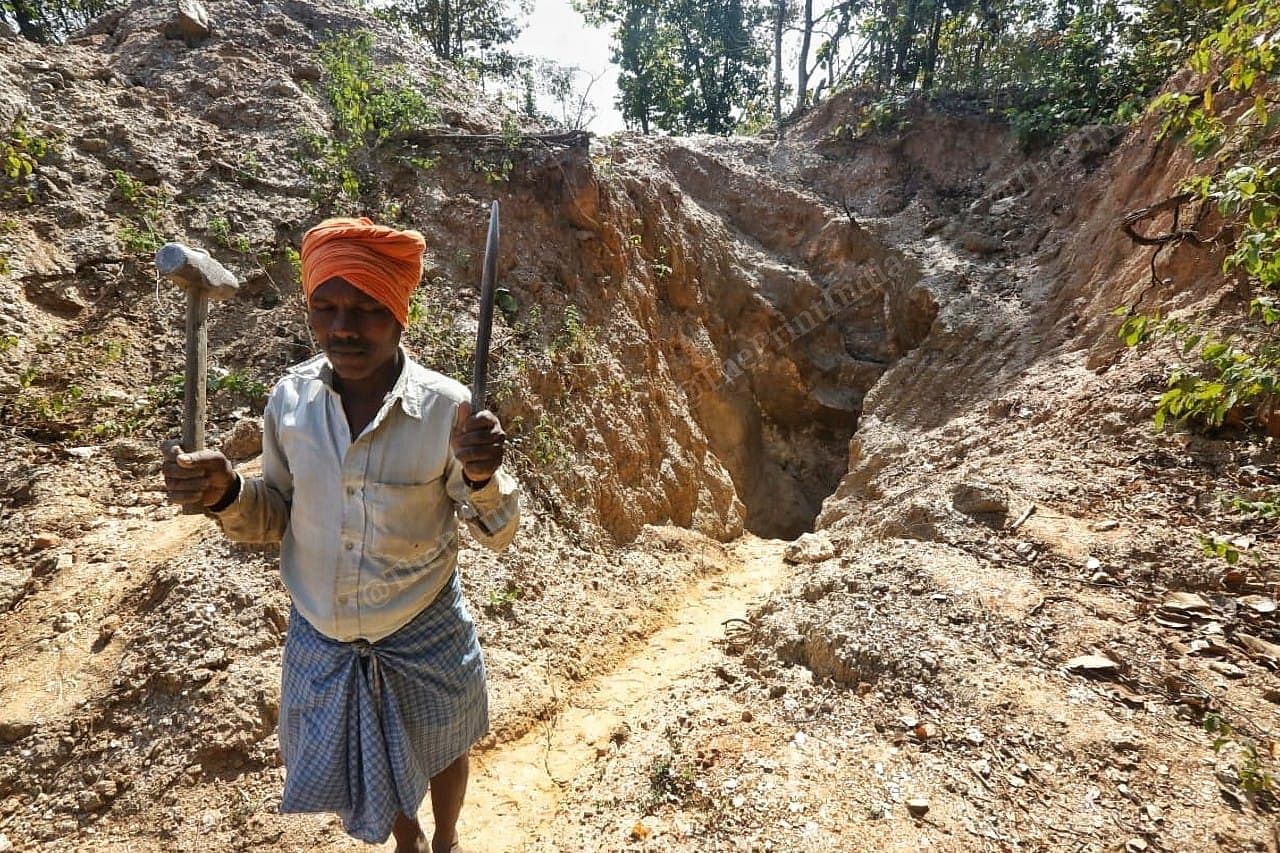
“It’s clear that we have to look out for ourselves, and do what we can to feed our families,” said Rai, standing at the mouth of the 30-foot-deep cave he spent a year digging, along with other labourers, in search of mica.
But how do you save yourself from a collapsing mine?
Rai picked up a handful of soil and let it trickle along the walls of the mine. “This is the sound of our alarm bell. When we hear it, we try to run.”
Also read: Children will act as informers to help govt keep other kids away from drugs


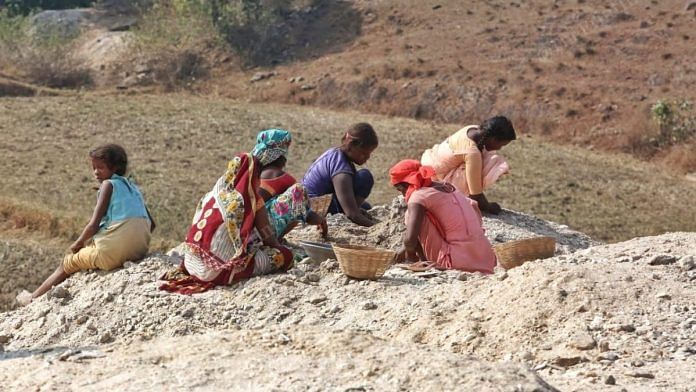

why aren’t you talking about this Rihana?
Am a proud subscriber of ‘The Print’. This is news that matters but very few report… especially from ground zero.